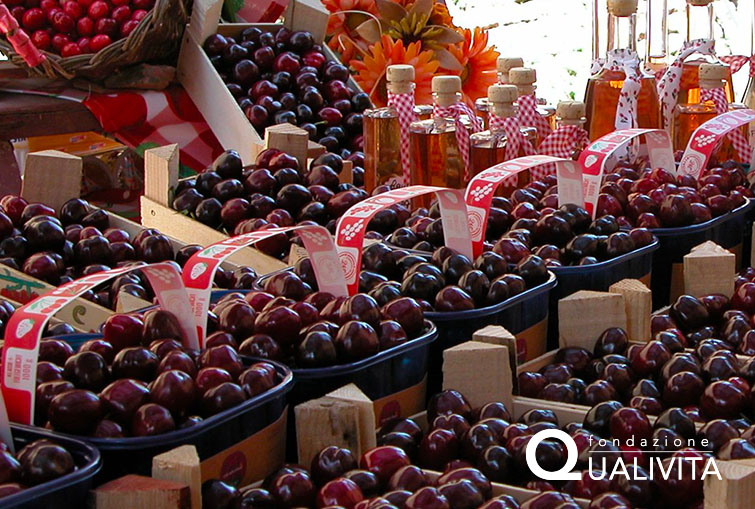Being able to store cherries 30 days after harvest while maintaining good quality, with a special focus on late cultivars. This was the focus of a talk by Carolina Torres of the Wenatchee Tree Fruit Research & Extension Center Postharvest Systems at Washington States University at an event held at WSU entitled: 'Ensuring premium blueberry and sweet cherry quality' (link to watch the event here).
Carolina Torres presented the results of three years of field trials comparing different preservation methods for different cultivars (Bing, Sweetheart, Skeena, Rainier) when the aim is precisely to preserve cherries for 30 days + 4.
US: Pacific Northwest is important for cherry production
"The Pacific Northwest area, which includes Washington, Oregon, Idaho, Montana and Utah, produces a fair amount of cherries. We are talking about 20,500 ha, 62% of the cultivated area in the US, producing 120,000 tonnes per year, or 73% of the US volume of fresh cherries, of which only 29% are exported. The season runs from June to August,' he said.
To guide the post-harvest research at WSU Tree Fruit, the research team is in constant contact with the industry: 'There is an industry advisory board and with them we identify the main topics of interest.
As far as post-harvest is concerned, first of all there is the firmness of the fruit, then the green colour of the stalk, especially for prolonged storage in a controlled atmosphere, and then optimal sugar and acidity contents because they are crucial for the taste, avoid dehydration'.
For optimal storage conditions in the post-harvest period, the WSU Tree Fruit research team wanted to test, with repeated trials, storage in MAP bags (modified atmosphere packaging) and bulk storage in a controlled atmosphere (CA), i.e. at certain oxygen and Co2 concentrations.
Post-harvest, MAP bag or controlled atmosphere?
"For extended storage,' Carolina Torres continued, 'there is a wide range of different modified atmosphere bags. They are widely used in different markets and work really well, without temperature fluctuations. So, in an ideal supply chain and cold chain scenario, MAP bags work".
Obviously, if you think about the future, bulk storage of sweet cherries would be much more efficient and controlled atmosphere is the alternative".
After showing the results of an experiment carried out in Chile in 2018 for the Sweetheart variety stored for 25 and 45 days at 0 °C, comparing the effects of 5 different MAP bags (3 commercial and 2 experimental) on acidity and dehydration of the stalk compared to untreated cherries and showing that inside the MAP bags the dehydration of the stem is always lower than in the untreated sample and that the acidity of the fruit is higher (with a positive effect on taste), Carolina Torres wanted to highlight what happens to oxygen and Co2 when the temperature is raised to 5°C for 2 days.
"The increase in Co2 concentration with increasing temperature should be noted. It means that there is potentially fermentation going on. If the chain is broken during the supply chain and the temperature rises, fermentation starts."
In the years 2021, 2022 and 2023, the research team carried out another experiment specifically to compare MAP bags with mass storage in a controlled atmosphere (CA) for more than 30 days after harvest. The trial was done on Rainier, Skeena and Sweetheart and Bing (in 2021, Chelan and Lapins were also tested).
The cherries were harvested in commercial orchards in the area of Washington state (USA). In the years 2022 and 2023, the cherries were also hydrocooled (3-4 °C) and stored in commercially available MAP bags and in CA, at different oxygen and Co2 concentrations. For the year 2022, proceeding with the research, each variety was tested at two ripening stages, one commercial and the other early.
The three seasons obviously could not have the same weather conditions: 2021 was characterised by an extreme heat wave in June, with temperatures reaching 49°C. In 2022, the spring was extremely cold during flowering, and even if there was a heat wave for a fortnight between June and July, temperatures reached a maximum of 44°C. Compared to previous seasons, 2023 was characterised by a warmer spring.
The results of 2021 showed that the effect of storage in a controlled atmosphere depends on the cultivar; that type of storage has a good effect on hardness for Chelan and Sweetheart. Controlled atmosphere improves the condition of the stalk compared to loose cherries.
In general, the controlled atmosphere regime did not significantly improve cherry storage compared to perforated MAP bags. The 2022 results (Rainier, Skeena and Sweetheart and Bing were considered, with Rainier at two degrees of ripeness).
"In 2022 we saw," said Torres, "an important difference in terms of decreased weight loss, for all treatments, compared to the untreated. This is true for all varieties except Skeena. The stalk, compared to 2021, at 30 days after harvest, saw less browning".
"In 2023, all 4 varieties were evaluated by harvesting at two different degrees of ripeness. Carolina Torres: 'After 30 days of storage, for Rainier we see that at both harvest times the stalk is in better condition when stored in CA, compared to untreated.
"We also observed a decrease in hardness. On Skeena and Sweetheart, again with two harvest times, the stalk, regardless of MAP or CA is in slightly better condition than the untreated. However, we did not expect another result: whether the cherries are stored in MAP bag or CA, we saw a decrease in firmness compared to the untreated".
Barbara Righini
Cherry Times - All rights reserved











